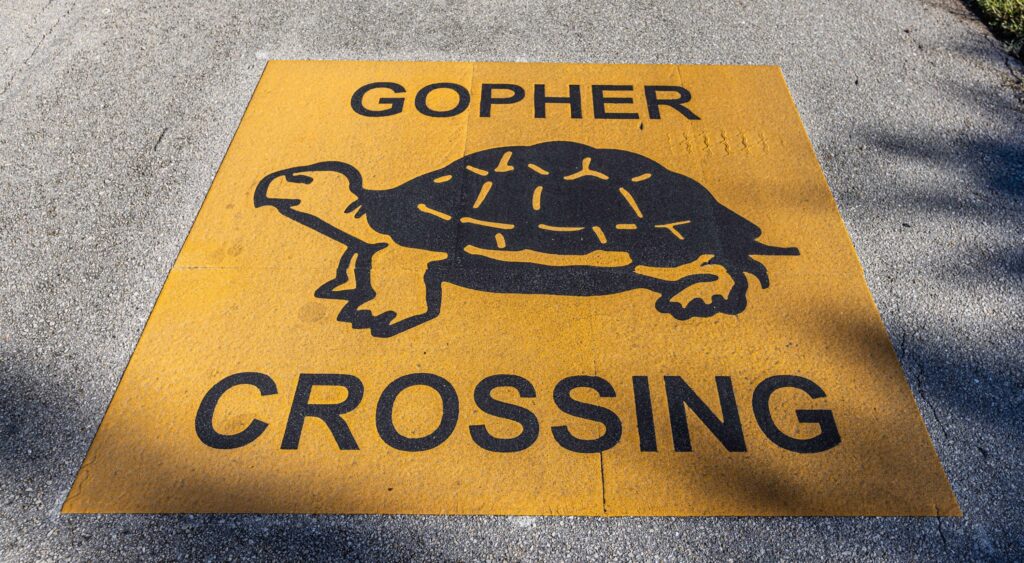

Marco Island Rallies to Protect the Gopher Tortoise: A Keystone Species Under Threat
Marco Island Rallies to Protect the Gopher Tortoise: A Keystone Species Under Threat
MARCO ISLAND, FL – As development continues on Marco Island, the push to protect the Gopher Tortoise is reaching a critical point, with residents, conservation groups, and city officials intensifying efforts to safeguard this threatened “keystone species” and its vital burrows.
The Gopher Tortoise (Gopherus polyphemus), a long-lived reptile that plays a crucial role in its ecosystem by digging burrows that shelter over 350 other species, is facing significant challenges on the island, primarily from habitat loss due to urbanization and direct human impact.
The Perils of Progress
The most immediate threats on Marco Island are tragically evident: road mortality and the destruction of burrows.
Local reports and conservation efforts highlight a recurring problem with tortoises being struck by vehicles, prompting community action. In a recent example, a partnership between the Conservancy of Southwest Florida, local Audubon groups, and the City of Marco Island led to the installation of silt fencing along a section of South Barfield Drive, a known hotspot for tortoise casualties, in an attempt to redirect the slow-moving animals away from the busy road.
Furthermore, there have been unsettling incidents of deliberate burrow destruction. In one reported case, a vacant lot with numerous burrows was found with nests stuffed with trash and sealed with broken cement blocks, an action that Florida Fish and Wildlife Conservation Commission (FWC) investigators have taken seriously.
A Community-Wide Conservation Effort
Despite the challenges, a strong conservation ethic is emerging on the island. The Gopher Tortoise is listed as a State-designated Threatened species, and both the animal and its burrows are protected under Florida law.
Key conservation efforts underway include:
Strict Permitting for Development: Before any land clearing or construction, property owners are required to obtain permits from the FWC to ensure tortoises are safely relocated to approved recipient sites. Violations, such as using heavy machinery near burrows without proper permits, can result in significant penalties.
The Gopher Tortoise Friendly Yard Recognition Program: The City of Marco Island is encouraging private landowners to embrace the presence of tortoises by using native, tortoise-friendly plants, leaving burrows undisturbed, and keeping pets and vehicles away from burrow entrances.
Citizen Action and Awareness: Residents are actively involved, from stopping traffic to help a tortoise cross the road to reporting suspected violations to the FWC’s Wildlife Alert Hotline. In a notable act of preservation, one resident even purchased a vacant lot solely to protect a large colony of tortoises from future development.
Scientific Research: The FWC, in collaboration with groups like the von Arx Wildlife Hospital, has been conducting “bioblitz” sampling events on Marco Island’s tortoise populations to assess their health and monitor for pathogens, gathering valuable data for the species’ long-term survival.
Conservationists stress that Gopher Tortoises are an intrinsic part of Marco Island’s natural beauty and that coexisting with the species requires vigilance and respect from both long-time residents and new arrivals.
The message is clear: protecting the Gopher Tortoise is not just a regulatory requirement—it’s a community-shared responsibility to safeguard a threatened cornerstone of the island’s unique environment.